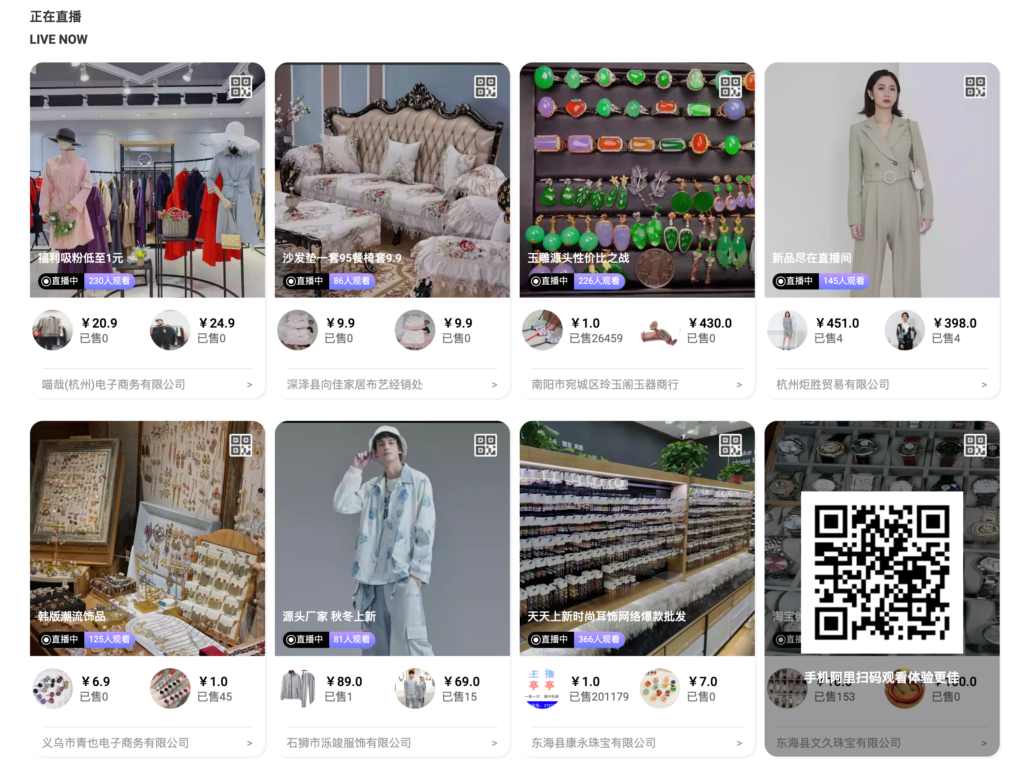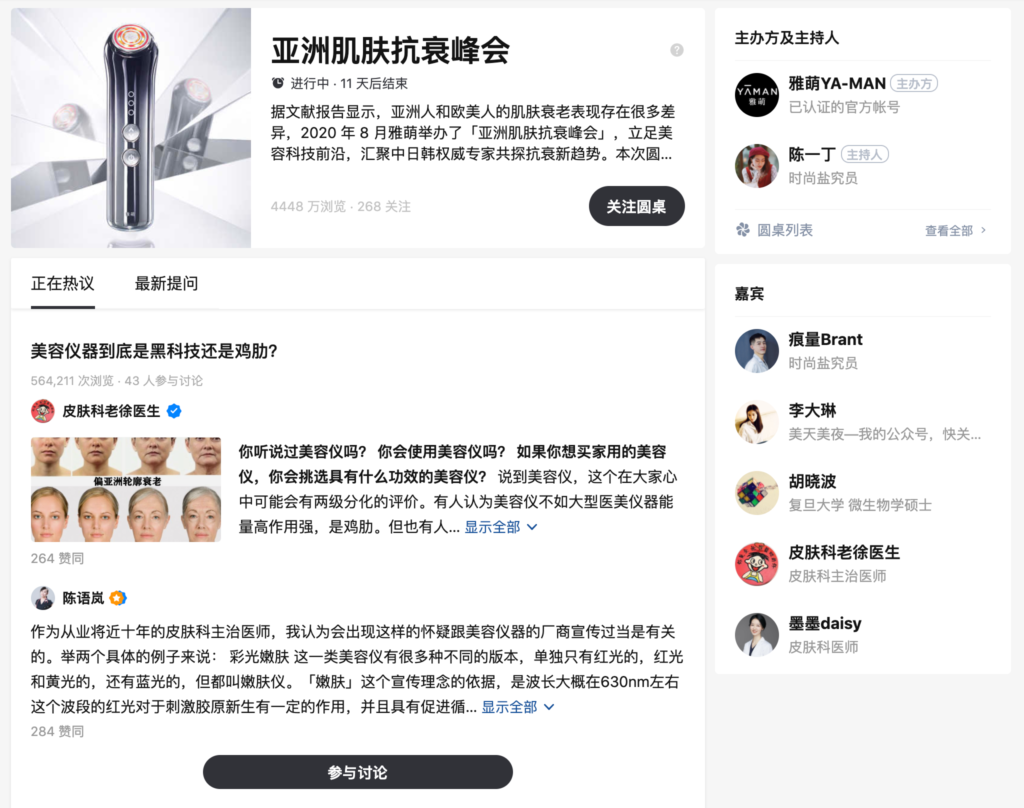B2B connections lie at the heart of China’s digital transformation. In 1999, a group of people, led by Jack Ma, started Alibaba.com. We know about him and Alibaba today because this English-language site that connect small businesses around the world with manufacturers and suppliers in China thrived and expanded into one of the largest tech companies in the world. The company’s next website was 1688.com. It was built on the Alibaba model but in Chinese for domestic buyers, suppliers and manufacturers.
John Caplan, head of Alibaba Group’s North American B2B said in July 2019 that “B2B e-commerce is a $23.9 trillion market — six times larger than B2C e-commerce.” It’s no wonder Alibaba laid its foundations on B2B.
So what are the most important digital channels for B2B businesses in China? Here’s a helpful list starting with one that you already know.
B2B Websites
1. Alibaba.com
With more than 20 years under its belt and still going strong. No one can deny the crucial place Alibaba occupies in the B2B market. Uniquely, it also can’t be said that it was a copy of a well known Western site or that there’s a site in the West that comes close to its scope and success.
Named after a well known character from a folktale, Alibaba.com is now a huge portal for small businesses worldwide. There are 21 product categories to choose each with tons of subgroups. It’s possible to buy 500,000 barrels of crude oil or a single toy. It has menus on the homepage that allow users to communicate in 15 different languages and for prices to be shown in currencies from all over the globe. Most of the suppliers on the site are from China but there are some international companies as well.
A wide range of international payment options are available such as Visa, Mastercard, Western Union, Boleto and telegraphic transfers. Credit lines for US customers, coordinated by Atlanta-based fintech company Kabbage, are also available. This is unlike many Chinese e-commerce sites, which are optimized for local payment systems and often don’t accept international ones. Alibaba also offers logistics services and trade insurance so that those who’ve paid through the site can get their money back if there are any problems with their supplier. Verified suppliers on the site have been inspected by the company.

To speed things up, business owners can use a Google Chrome extension called Source Now which uses screenshots of items and automatically feeds them into Alibaba.com to bring up similar items.
In 2019, there were more than 150 million registered members, at least 10 million active buyers and greater than 150,000 sellers.
2. 1688.com
Alibaba’s second website, which was also established in 1999, focuses on China’s domestic B2B market. 1688 was chosen because in the early days of China’s internet, numbered URLs were normal and English or pinyin URLs were hard to remember. Numbers have their own symbolic meanings in China and 1688 conveys the idea of a steady stream of riches or good fortune. 8 is a lucky number that’s connected with wealth and it’s common to see phone numbers, addresses or prices featuring 8s, 6s or 3s.
(On a related note, 4 is unlucky because it sounds like the word “death” in Chinese so if your company name or address or phone number features the number 4 or repeated 4s, consider replacing them with 8s, 6s and 3s.)
1688 is similar to Alibaba.com with tougher competition, a faster pace and lower prices. There’s no English interface but English words like “Live Now” can be seen on the screen.
Live streaming has taken the Chinese internet by storm and, alongside standard B2B e-commerce functions, you can watch live streams from factories, warehouses and offices modelling apparel, demonstrating products and answering questions submitted in text comments about key product features. You can also watch previous live streams and other videos on the site.

There are 3 useful features for international B2B businesses on 1688.com.
A) Flagship stores
Businesses can establish a flagship store to make it easier to establish relationships with local buyers in China and make it easier for them to do business in their own language. This is most useful for large companies that have branches in China. Companies like 3M, BASF, Merck, and Dow have flagship stores on 1688. Certain products, such as organic foods, milk powder and certain beauty products are in high demand from overseas suppliers so businesses specializing in these areas can consider establishing a local branch in China and building a presence on the site.
B) Checking Price Differentials
Smaller businesses can use the site to compare local and international prices. This can be used as a reference when it comes to price negotiations. Many of the same companies list on Alibaba.com and 1688.com but it should be remembered that the price differentials come with corresponding quality differentials.
C) Doing Research
The videos and live streams on the site can be used to get an initial sense of a company’s products, facilities and level of professionalism. If you have staff who can type in Chinese, they can submit questions during a live stream.
To contact 1688 suppliers or establish a presence on the site, you need an agent, Chinese staff or you need to learn Mandarin. Payments and arranging for exports out of the country would also be challenging and would require an agent or staff on the ground in China.
3. Globalsources.com
Started in 1971 as Asian Sources magazine and then moving online in 1995, 4 years before Alibaba.com existed, Globalsources is one of the oldest B2B forums in Asia. It’s in English and made for international companies to find local suppliers and manufacturers in China. It’s based primarily in Shenzhen, Guangzhou and Hong Kong. Before Covid, it also sponsored trade shows in the region.
Globalsources reputation is that its database has fewer suppliers and factories than Alibaba but they’re seen as being higher quality and more reputable. It’s seen as more selective and is known for doing more rigorous checking.
The site shows prices, has a margin calculator, has a sample request function, has credit check and credit insurance services to reduce risks and has tips and resources to help new businesses. It also has sourcing services to save time and arranges meetings with potential partners.
Although most companies on the site are based in China, there are also some from Vietnam, India, the Philippines and South Korea.
4. Matchory.com
Matchory.com is a German site with an English interface that focuses on matching small brands that want to make custom products to the world‘s best factories. Many are based in China but it also has facilities in Europe and other manufacturing centres.
They claim to have 3,000,000 audited manufacturers in their database and they use . It use responses from their enquiry forms and AI to help match the manufacturers to companies with the best fit and price. It operates more as an agent for manufacture matching and supply chains rather than as a search engine like the other sites listed above.
The Best Chinese Social Media for B2B Businesses
1. Zhihu.com
The Q&A app Zhihu is like Quora. It’s a great place for B2B enterprises to build their profile and reputation. A verified official brand account, or better yet, a VIP membership, allows brand reps to establish themselves as thought leaders and respected names in the industry. Companies should establish a verified account because their brand may already have an account on Zhihu that was registered by a fan, staff at a subsidiary or someone with bad intentions. Registering officially and investigating other accounts claiming to represent your brand gives you control of your company’s reputation on the site and allows coordination and alignment.
Livestreaming, webinars and live chat capabilities are available to selected brands. These are great ways to discuss industry-specific topics and interact with potential partners, customers and the public.
Zhihu’s users are mostly educated, young, Tier 1 city residents looking for authoritative, useful content with flair. Answering questions can educate people, build awareness and credibility and drive traffic to the company’s account page. Aim to provide information rather than push brand messages.

Check out our Zhihu marketing guide and learn more about how to market your business on Zhihu.
2. LinkedIn.com / Maimai.cn / Zhaopin.com
LinkedIn’s local version for the China market has done well but other local recruitment and profession-based social networks like Maimai and Zhaopin have done well and are now overtaking LinkedIn in some respects.
Maimai states that it has over 50 million users and according to research firm Analysys, it has a user penetration rate of 83.8% while LinkedIn China’s is only 11.8%. Maimai has moved into the lead with localized features like real-name registration, anonymous chat, mobile-first design, and partnerships with Chinese corporations.
These are primary China-based channels so you must operate them through local employees and entities, have an assistant who can translate communications or be able to read and write in simplified Chinese.
3. WeChat
WeChat is a valuable channel because it’s everywhere and used by everyone. There are over 800 million monthly active users. Since it’s a semi-closed social network, B2B businesses can’t take a traditional approach, but it’s a mistake to think that it can’t be used for B2B marketing at all.
After establishing a verified official account, WeChat is a good platform for the brand’s own key opinion leader(s) (KOL) and to build WeChat groups for selected clients, partners and potential partners. The brand’s key opinion leader (or leaders) should be relatable, have expertise and be able to answer questions about the industry, the brand and its products. They can be consultants with industry experience, business management experts, analysts or knowledgeable former workers.
Also consider key opinion consumers (KOCs). Key opinion consumers can be clients who know the company well. They could also be company employees who help with enquiries, complaints, quotations, orders, schedules and other client relationship tasks.
Brands can develop mini programs for WeChat that allows clients to make orders or allow explore the company’s distribution channels and products.
Check out our WeChat marketing guide and learn more about how to market your business on WeChat.
4. Weibo
Weibo is a very popular, open public social network similar to Twitter that is extremely popular. It has more than 500 million monthly active users.
After getting a verified official brand account, B2B brands can post content and work with KOLs and KOCs on the platform. Brands must still deliver high-quality, professional, useful content that’s also engaging, interactive and connected to trending topics and special occasions to get any notice on this fast-moving app.
Regularly posted compelling visuals and well-crafted short videos that target clients, potential clients and industry leaders could be highly effective. Pose questions, answer comments, post quality user-generated content, engage in creative campaigns and use hashtags strategically.
Engaging in advertising on both WeChat and Weibo is an option but requires a serious budget which may be better spent elsewhere.
Keep in mind that all China-based tech platforms are subject to state regulations as well as their own internal rules.
Check out our Weibo marketing guide and learn more about how to market your business on Weibo.





